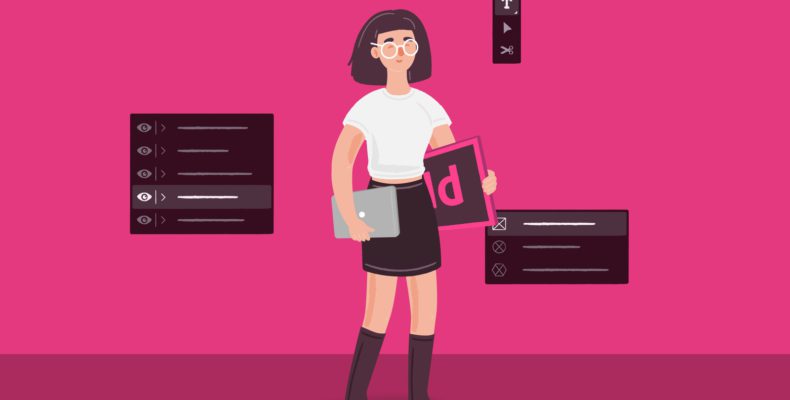Adobe InDesign is the industry-leading program for a wide range of publications, from magazines to digital posters. An efficient workflow is essential to any designer’s arsenal – here are 10 InDesign tricks to help you do more in less time
1) Preview & Presentation Mode
Pressing W on your keyboard is the shortcut to toggle between editing and preview mode. One will show all your margins, outlines, and elements in Normal mode, and the other will hide all of these in Document mode. Pressing Shift+W will take you to Presentation mode, which also puts your document on a blank background, ready to present drafts without the need to export. If your document has multiple pages, you’ll be able to scroll through as if it’s a slideshow
2) Page Numbers
In longer documents, page numbers can be a pain. Head to the Master page under the Pages menu and create a text box where you’d like to put the page numbers, then go to Type -> Insert Special Character -> Markers -> Current Page Number, or use the keyboard shortcuts Ctrl+Alt+Shift+N or Cmd+Shift+Option+N to quickly insert page numbers to all your pages. You can change where they go for odd and even numbers if you wish to do so
3) Turn off Hyphenation
By default, InDesign turns on paragraph hyphenation. When justifying or aligning text, the hyphenation may not fit well with your design. Go to the Paragraph panel by pressing Ctrl+Alt+T or Cmd+Option+T and uncheck the Hyphenate box, which should be the last option
4) Underlining Text
To quickly underline parts of a text in an element, simply highlight it, and press Ctrl+Shift+U or Cmd+Shift+U to toggle between normal and underlined text
5) Balance Ragged Lines
Balancing ragged lines will evenly distribute the number of characters or words between all the lines, so they are approximately the same length. Add a justifying alignment to this for the best result. To do so, open the paragraph panel (Ctrl+Alt+T or Cmd+Option+T) and select this option in the dropdown menu
6) Placing & Linking Assets
Let’s say you’re creating a style guide for a logo you’ve created, but the logo isn’t finished. Instead of copying and pasting the same image into the document with each revision, press Ctrl+D or Cmd+D to place an asset into the document. This can be any compatible file which you can then display in your document. InDesign will automatically update any changes from the original file into the project. Open the Links panel to embed images – if you’re sharing the project with someone, they’ll need to either re-link the original files to automatically update, or have them embedded within the document to see them
Bonus tip: If this is a web document, you can even place video and audio files. Just follow the above, and select the file you want to place
7) Adjusting Layouts
Use the Adjust layout tool to, you guessed it, adjust your layouts. If you need to publish in multiple formats, such as switching between portrait and landscape, or would like to adjust margins, page sizing, or bleed, simply head to File -> Adjust Layout and change all the page settings you’ll need from there
8) Combining Objects
If you want to combine shapes into a single frame, you can go to Object -> Paths -> Make a Compound Path to permanently combine the two or more shapes into one. This is especially useful for irregular shapes which need to be drawn by adding more than one shape
If you want to combine elements together but still want to edit them separately, such as a text element and a shape outline, use Ctrl+G or Cmd+G to group and ungroup them instead
9) Quickly Replace Images
Don’t like an image you’ve already placed on the canvas? Hold Alt or Option while you drag a new image on top. This will replace the existing image and will fit perfectly inside the frame you previously set
10) Content Conveyor Tool
What if you need to copy and paste many different elements, and you’ll need to quickly switch between them? Open the Content Conveyor by clicking the first item in the program toolbox. Along the bottom, the first icon is the Content Collector, which lets you add items to the conveyor where you can quickly find and select your elements. The second icon next to it is the Content Placer, which will place any asset you select onto your document page. You can even create links, custom style mapping, and edit settings on how you want to place objects
